(The famous four, Washington, Jefferson, Teddy Roosevelt and Lincoln, left to right)
There are few more iconic, quintessentially American sights or locations than the four-headed presidential hydra of Mount Rushmore. Yes, it’s a long way from anywhere unless you live in South Dakota to start with, but it’s a place that I think every American should visit at least once in their lifetime. This was my second visit and my wife’s first. My first time at Rushmore was more than twenty years ago during a cross-country road trip with my son. I remember we stopped, hung out for an hour or so, took our photos and left. This time we had a much longer, more leisurely visit, spent time examining all the different aspects of the memorial, and soaked in pretty much everything this American mecca has to offer, with both a daytime and nighttime visit.
(Avenue of the flags of all fifty states)
(Gutzon Borglum, sculptor of Mount Rushmore)
As most people who have ever come to or studied the history of the Mount Rushmore Memorial know, this incredible monument in stone is owed almost entirely to the heroic efforts of one man, Gutzon Borglum. Borglum, already a prominent and celebrated sculptor in his own right, was originally contacted by South Dakota historian Doane Robinson. Robinson wanted to carve Old West historical figures such as Lewis and Clark, Buffalo Bill Cody and Indian chief Red Cloud in order to promote tourism in the Black Hills region.
(First view of the mountain along the highway from Keystone)
(Main entrance to the memorial)
Borglum was keen on the idea but he was unsatisfied with both Robinson’s conception of Old West figures and also with Robinson’s original location in the Needles region to the south deeper in Black Hill country. Borglum believed the rock in the Needles was too soft and would not hold up to the kind of carving he had in mind. It was also Borglum’s idea to make it instead a monument to four American presidents, celebrating the first 130 years of the United States, which Borglum believed would be a more fitting subject for such a grand project. Federal funding was secured and work began in 1927, not being completed until 1941 at a cost of just under one million dollars. Gutzon Borglum unfortunately died of an embolism a few months before completion, the work being finished under the direction of his son, Lincoln.
(Just making sure we’re in the right place)
(Plaque honoring all the workers)
During the fourteen years of sculpting, over 400 men worked on the project. No fatalities were suffered in all that time, a tremendous achievement despite the difficult and extremely dangerous nature of the work, which included dynamiting and heavy drilling while hanging precariously from harnesses at all stages of the job. Most of the workers were locals who took an increasingly great amount of pride in their participation on this monumental undertaking.
(Yes, we really were there, here’s the proof)
A few miscellaneous facts and figures. Just in case you don’t know (or remember) the four presidents depicted are George Washington (prez #1), Thomas Jefferson (prez #3), Theodore Roosevelt (prez #26), and Abraham Lincoln (prez #16). Each of their heads measure sixty feet vertically on the mountainside. The mountain is named for Charles Rushmore, a New York lawyer who led a prospecting expedition in the region in 1885. The Lakota Sioux name for Mount Rushmore was Six Grandfathers. Entrance to the Memorial is free to all – but they ding you eleven bucks for parking. And no, for all you film trivia buffs, Cary Grant never actually stood on Washington’s head or climbed down his nose during the famous climax of North by Northwest. Hitchcock wanted to film at Rushmore but was denied by the Park Service. It was all filmed on sets.
(The wide view)
(George, Abe, and Tom’s nose)
Borglum’s original concept was to sculpt the four presidents from head to waist. In the Sculptor’s Studio at the Memorial, you can see one of his original plaster castings (he made ten) made at one/tenth scale which shows how he wanted the finished product to look. The story I’d always heard and read was that funding dried up and so they simply stopped with only the heads finished. But during our recent visit to the studio, where we were treated to an informative fifteen minute talk from one of the rangers touching on all aspects of the project, I heard a different tale.
(One of Borglum’s plaster casts showing the original head to waist concept of the memorial)
It was the ranger’s assertion that work ended not for lack of funding but because as Borglum got further down the mountainside into the area below the heads, there were bands of softer rock than the hard granite above. This would have made it impossible for the rock to withstand the heavy blasting and drilling necessary to achieve the same consistency and precision as the work already done, and would also have worn away at a much faster rate. Thus, Borglum was forced to abandon the larger canvas he sought to achieve and settle for the simpler four-headed sculpting which we all know and have become accustomed to as the final product. Of course, “simpler” is a relative term, as there was certainly nothing simple about any aspect of the work, something you come to appreciate the more you learn about it.
(G.W., with Abe peeking through the branches)
When you come to the Mount Rushmore Memorial there are many things to do and see. My recommendation is take your time and do them all. As I mentioned earlier, it’s not exactly the most convenient place to get to, so if you’ve come this far, what’s the hurry? The highlight for us was the Presidential Trail, a pedestrian loop which takes you right down to the base of the mountain and the edge of the rubble field. It’s a nice stroll along a paved pathway, much of it shaded, which can be important if you come during the summer months as we did. It gets hot in South Dakota, even in the hills.
(Genuine buffalo hide – sorry, not for sale)
(Replica Lakota village along Presidential Trail)
The best thing about the Presidential Trail is it takes you from one side of the mountain to the other so you get perspective on those famous four faces from all different angles. If you walk the trail clockwise as we did, about three-quarters of the way around is the Sculptor’s Studio. Check out the one-tenth scale plaster model of the mountain, see where Borglum actually worked, and stay long enough for one of the very informative ranger talks, which are held every half hour. There’s also a small bookstore inside the studio. A much larger bookstore can be found inside the visitor center near the main entrance.
(A different perspective)
Another highlight for us was the lighting ceremony at dusk. In truth, we hadn’t intended to be there, but miscalculations on my part about driving times and distances in the region caused us to be back near the Memorial entrance right at nine o’clock. We figured, what the heck, we’re here, it’s time for the lighting ceremony to begin, why not check it out? And we were very glad we did. By the time we parked and walked in, they had just begun.
(Ready for their close-ups: George and Tom)
(T.R. and Abe)
The lighting ceremony begins with a talk by one of the rangers relating some personal impressions and observations of what the Memorial means to them. Then there is a twenty minute film about the project, about Borglum, and about each of the four presidents, some of their accomplishments, and why these four men were specifically chosen to be immortalized in stone. I found the entire presentation quite moving and yes, it did indeed stir my patriotic fervor as I’m sure it’s intended to do. I know there are others who might not have the same reaction to all this flag waving. But honestly, why would you come to Mount Rushmore if you don’t love the USA to some greater or lesser degree and want to see it celebrated in this way?
(George in profile)
(The monument at night)
Near the end of the film, powerful floodlights are slowly turned on from high above the Amphitheater, bathing the sculpture in light. There was then an open invitation to any and all Armed Forces members in the audience, whether veterans or currently serving, to come up on stage, introduce themselves and what branch of the military they served and receive the heartfelt applause of the audience. It was a fitting end to our day at this uniquely American shrine.
(Avenue of the flags, and goodnight to Mount Rushmore)
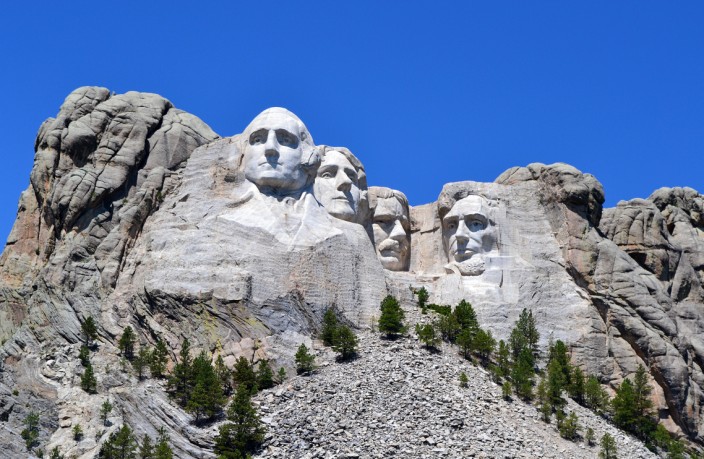
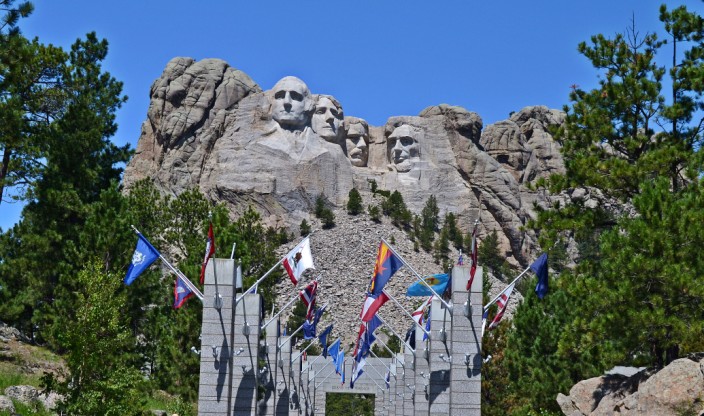
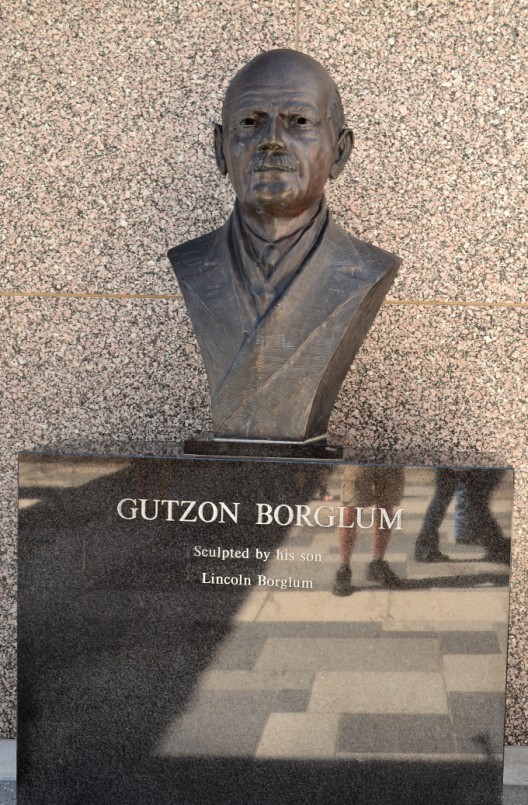
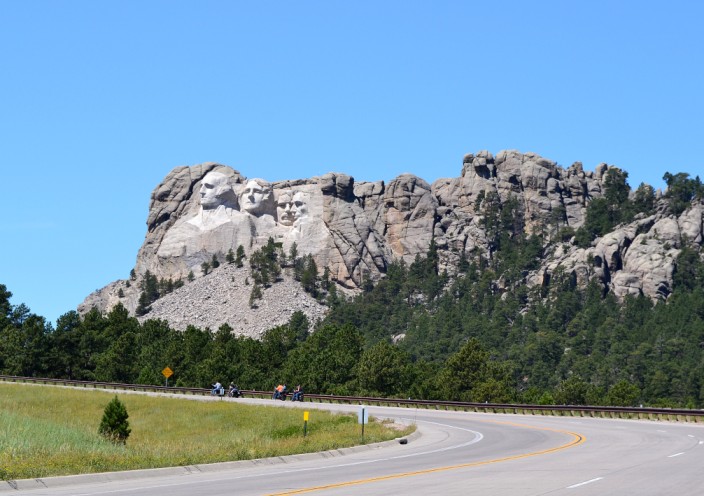
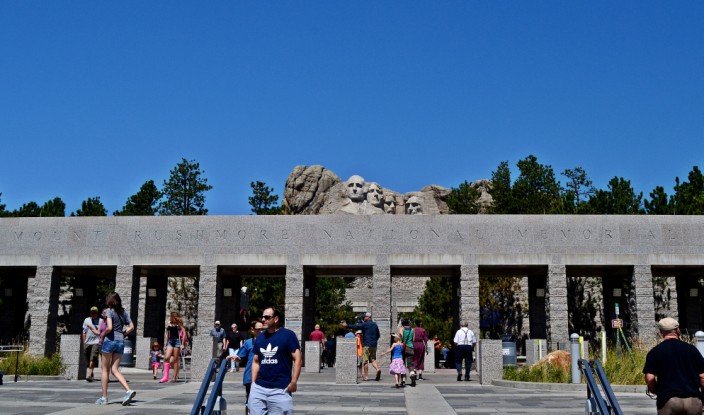
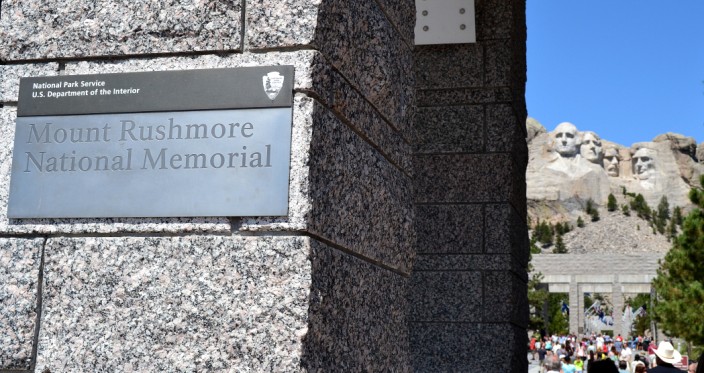
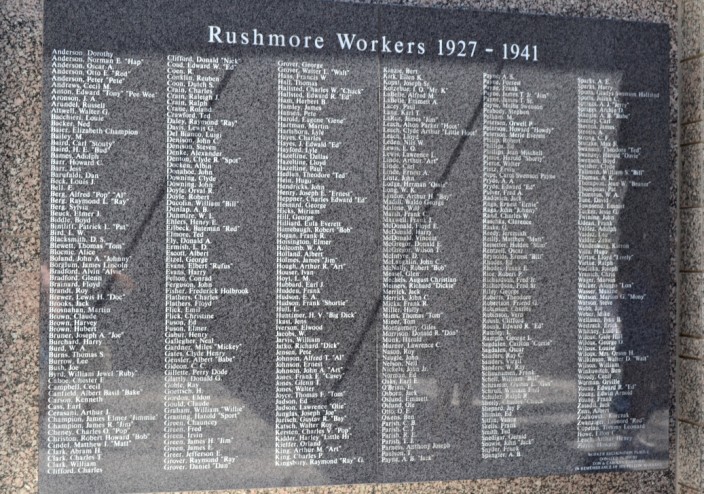
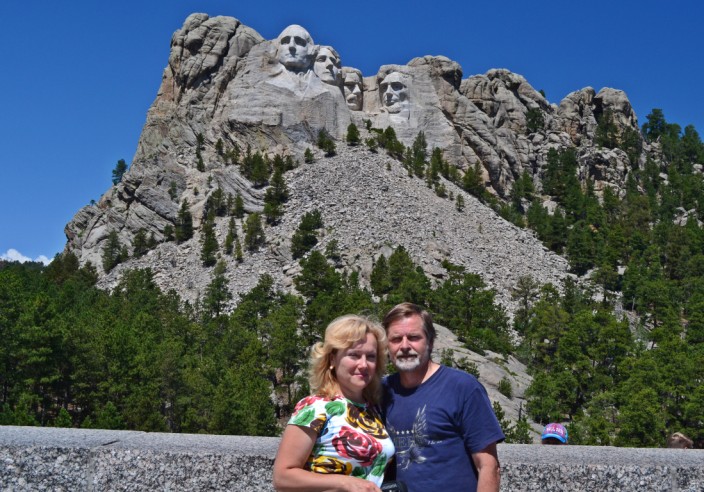
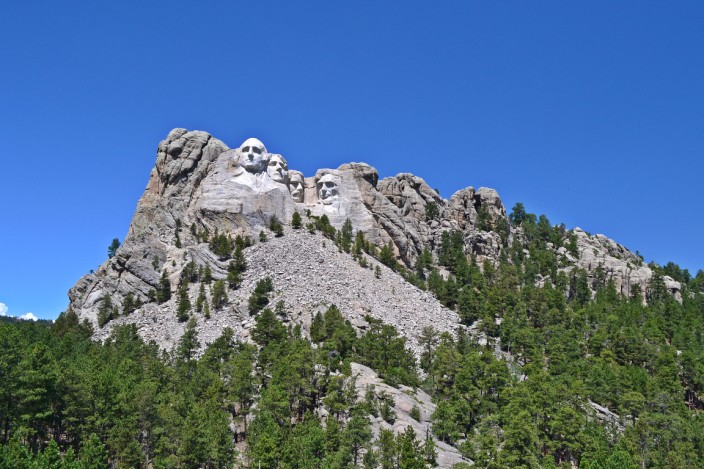
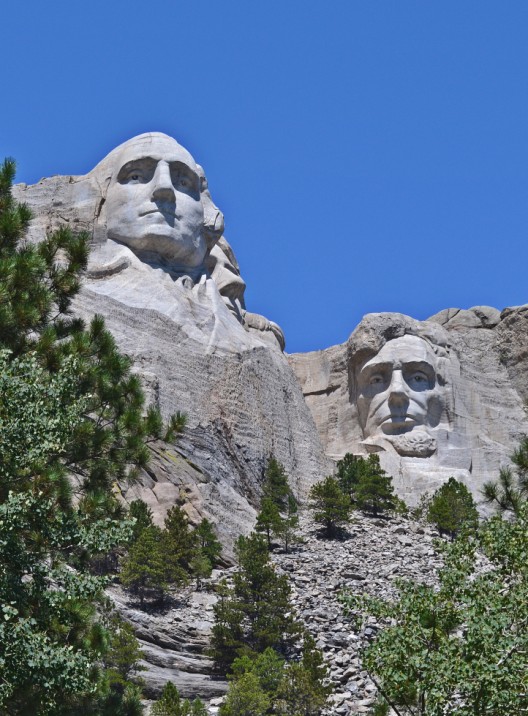
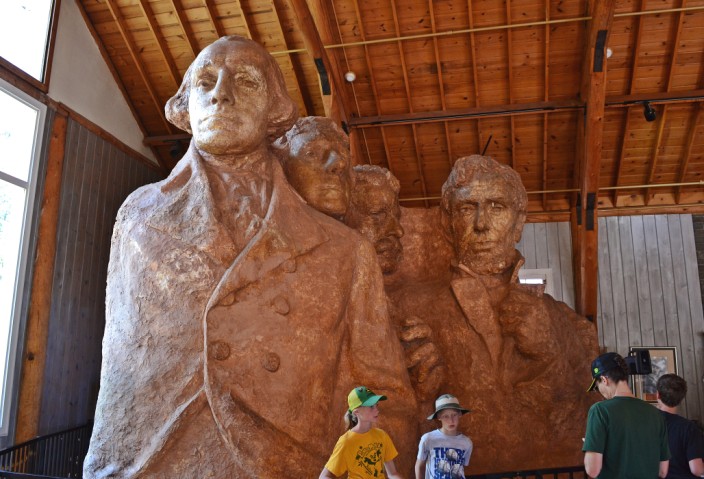
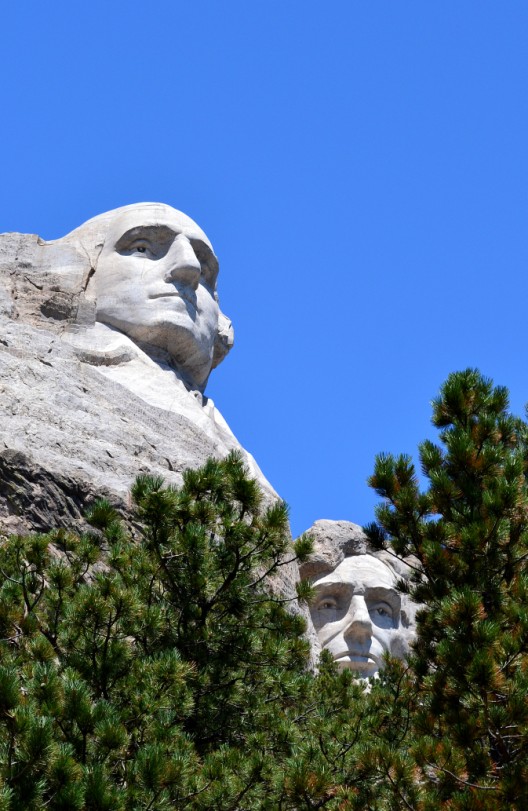
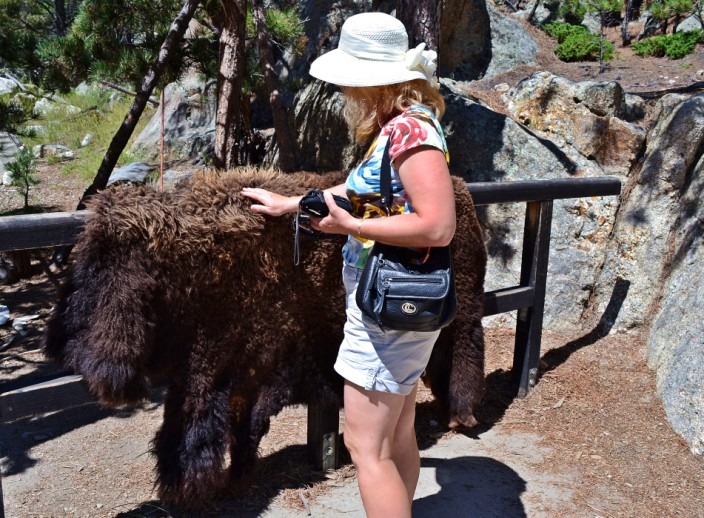
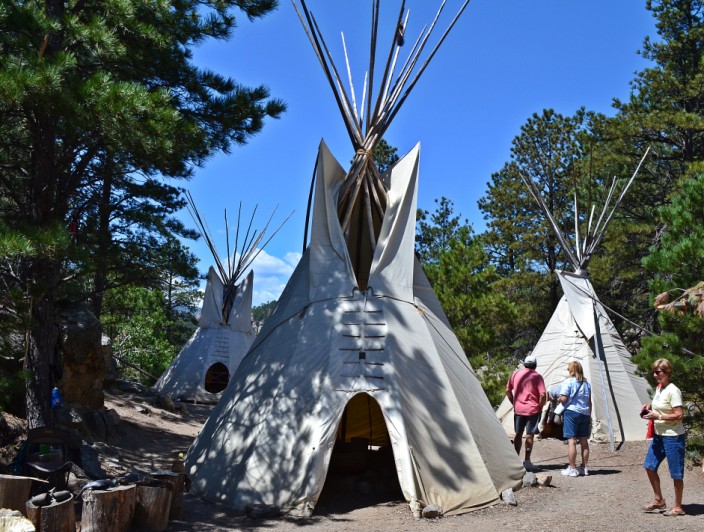
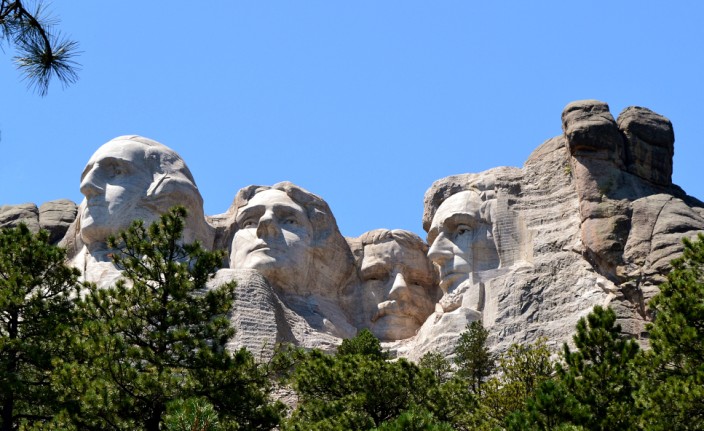
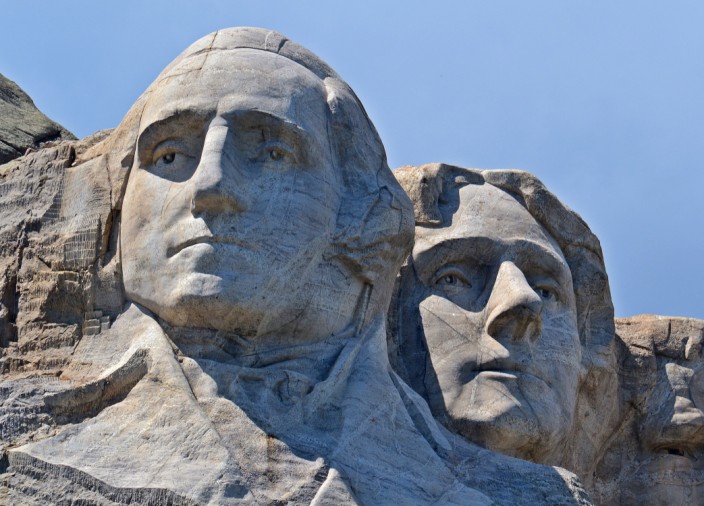
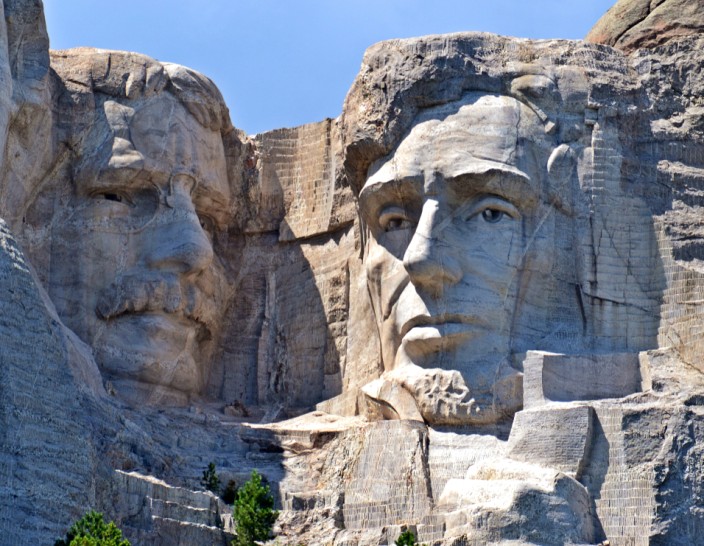
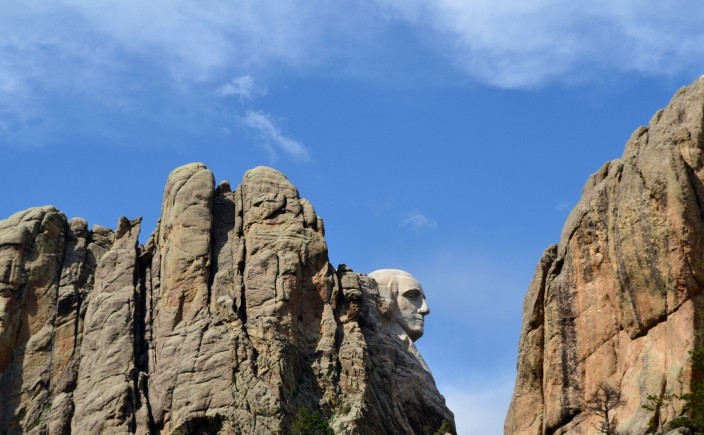
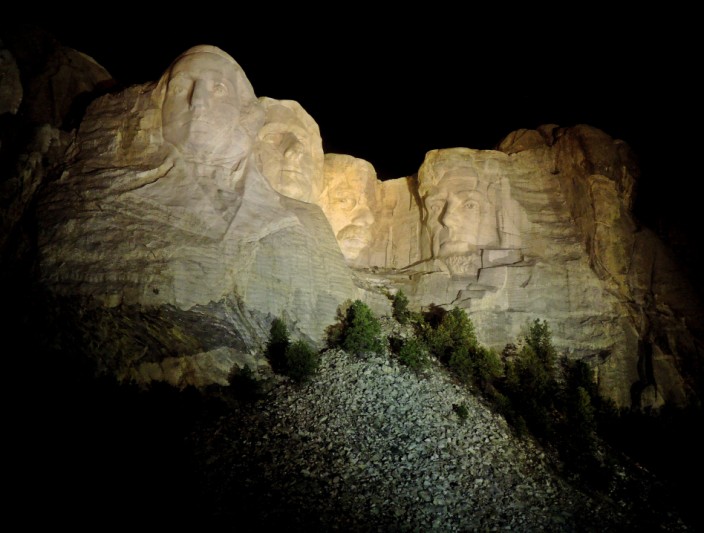
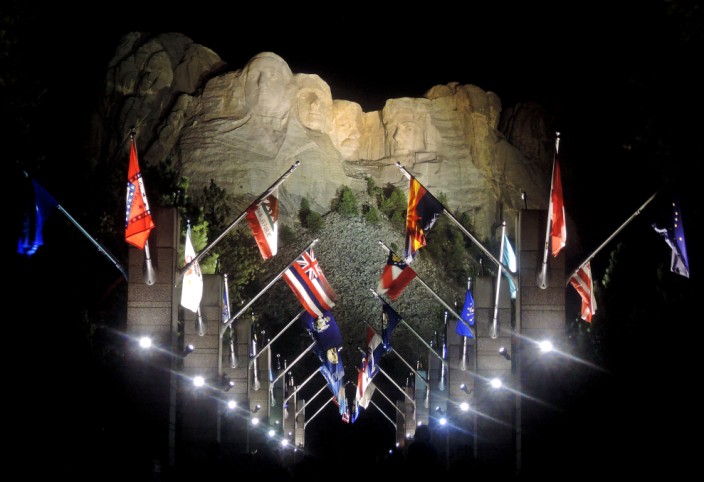
I love the header of your blog! Did you make that yourself? 🙂
And awesome pictures btw!